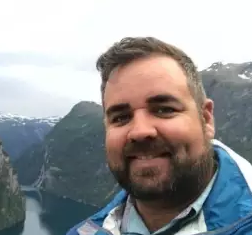Over the last three decades, the Antarctic Peninsula has undergone immense change. Researchers attribute this to both atmospheric and oceanic warming. One large effect of this is the collapse of the Larsen A Ice Shelf in 1995 followed by the break up of Larsen B seven years later. Researchers have now turned their attention to Larsen C, as its neighbors (the large, floating ice platforms that form where the coastline meets the ocean), have met their demise.
Changes that cause thinner ice shelves make it more likely that they will break up, but they also lead to melting. It’s been known that freshwater from melting ice shelves flows into the oceans, contributing to rising sea levels. But scientists were not entirely sure how the oceans themselves contribute to the phenomenon of melting ice shelves, in part because the thick ice prevented larger vessels from accessing the ice shelf. So they headed back to the ice shelf to find out.
A team began the Weddell Sea Expedition to measure changes, especially chunks broken off from the larger iceberg A-68 to determine how the ocean impacts the ice shelves. The project produced the highest spatial resolution sampling in that location as of yet, and researchers were able to gain a better view of underwear conditions. Researchers learned that a mass of warmer foreign water had been mixing into the Larsen C Ice Shelf to mix with the colder water. That mixing allowed the warmer water to further disperse around the world.
With this knowledge, scientists have come to understand that changes which occur far from the Antarctic can impact Antarctic Bottom Water and Antarctic ice shelves. It also points scientists in a direction for future research. Computer models will need to be updated to include the complex relationship between warm ocean water, ice shelves, and melting freshwater. As they stand, these models fail to take that interplay into consideration, and thus those people and policies that rely on that information are missing a crucial part of the bigger picture.
Fortunately, members of the community that create models based on this type of oceanic activity are hard at work updating those models and creating projects that utilize this information, and climate science is likely to greatly benefit from it.


